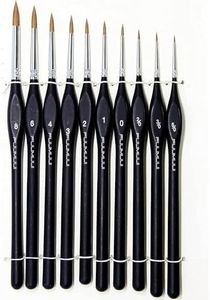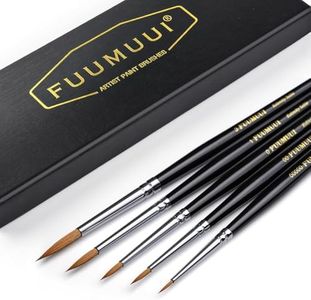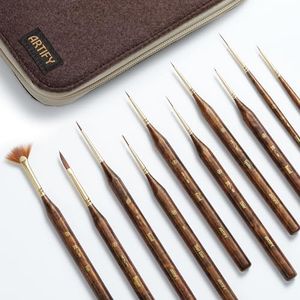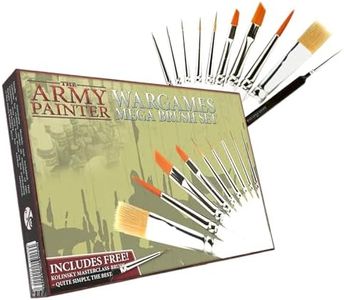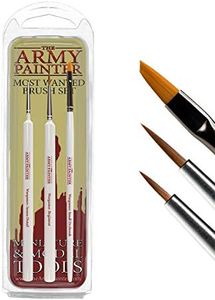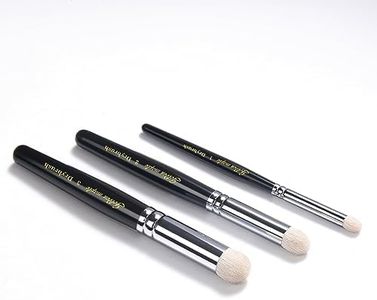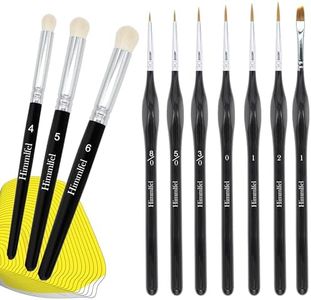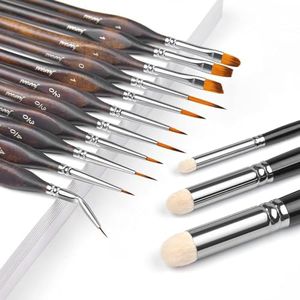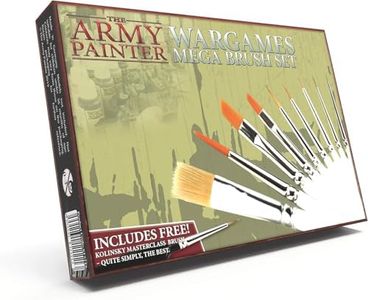We Use CookiesWe use cookies to enhance the security, performance,
functionality and for analytical and promotional activities. By continuing to browse this site you
are agreeing to our privacy policy
10 Best Miniature Paint Brushes
From leading brands and best sellers available on the web.By clicking on a link to a third party's website, log data is shared with that third party.
Buying Guide for the Best Miniature Paint Brushes
Choosing the right miniature paint brushes is crucial for anyone looking to paint miniatures with precision and ease. As you shop, remember that the best brush is the one that feels comfortable in your hand, suits your painting style, and matches the level of detail you want to achieve. By understanding the main features of paint brushes and how they relate to your painting needs, you can make a selection that helps you enjoy the hobby and improve your results.Brush SizeBrush size refers to how big or small the brush tip is, typically indicated by numbers (like 0000, 00, 1, 2, etc.). This spec is important because it determines how much control you have over your paint application. Smaller brushes (with lower numbers, like 00 or 1) are great for tiny details, while larger brushes (higher numbers, like 4 or 6) are better for painting larger surfaces or base coats. When choosing, think about what you'll paint most often: detail work usually benefits from tiny sizes, while broader coverage calls for larger brushes.
Brush ShapeBrushes come in several shapes—most commonly round, flat, and detail or spotter tips. The shape affects how paint is applied: round brushes are versatile for both detail and wider strokes, flat brushes are best for covering larger areas or blending, and spotter or detail brushes are specialized for the finest lines and highlights. Pick your shape based on your techniques; for most miniature painting, a range of round and a few detail brushes will get you far.
Bristle MaterialBrush bristles can be made from natural hair (usually sable or kolinsky) or synthetic fibers. Natural hair holds more paint and forms a fine point, making them popular for detail and advanced work; synthetic brushes tend to be more affordable, durable, and suitable for beginners. Decide which matters most for you: if you want high precision and softer bristles, natural hair might be worth it, while synthetics work well if you're learning, rough with your brushes, or use harsh paints like acrylics.
Handle Length and ShapeHandles come in varying lengths and thicknesses. Short handles are most common in miniature painting because they offer better control when painting at close range, while longer handles are sometimes chosen for comfort or habit. Handle shape is mostly about personal preference and comfort—choose the one that feels natural in your grip to avoid hand fatigue during long painting sessions.
Brush Spring and SnapSpring and snap describe how a brush returns to its shape after each stroke. A good spring helps the bristles pop back into a fine point, which is very important when painting details or sharp lines. High-quality brushes (often those with natural hair) tend to have better spring, but some synthetics also perform well. If you like crisp lines and steady control, prioritize a brush that advertises good spring and snap.

